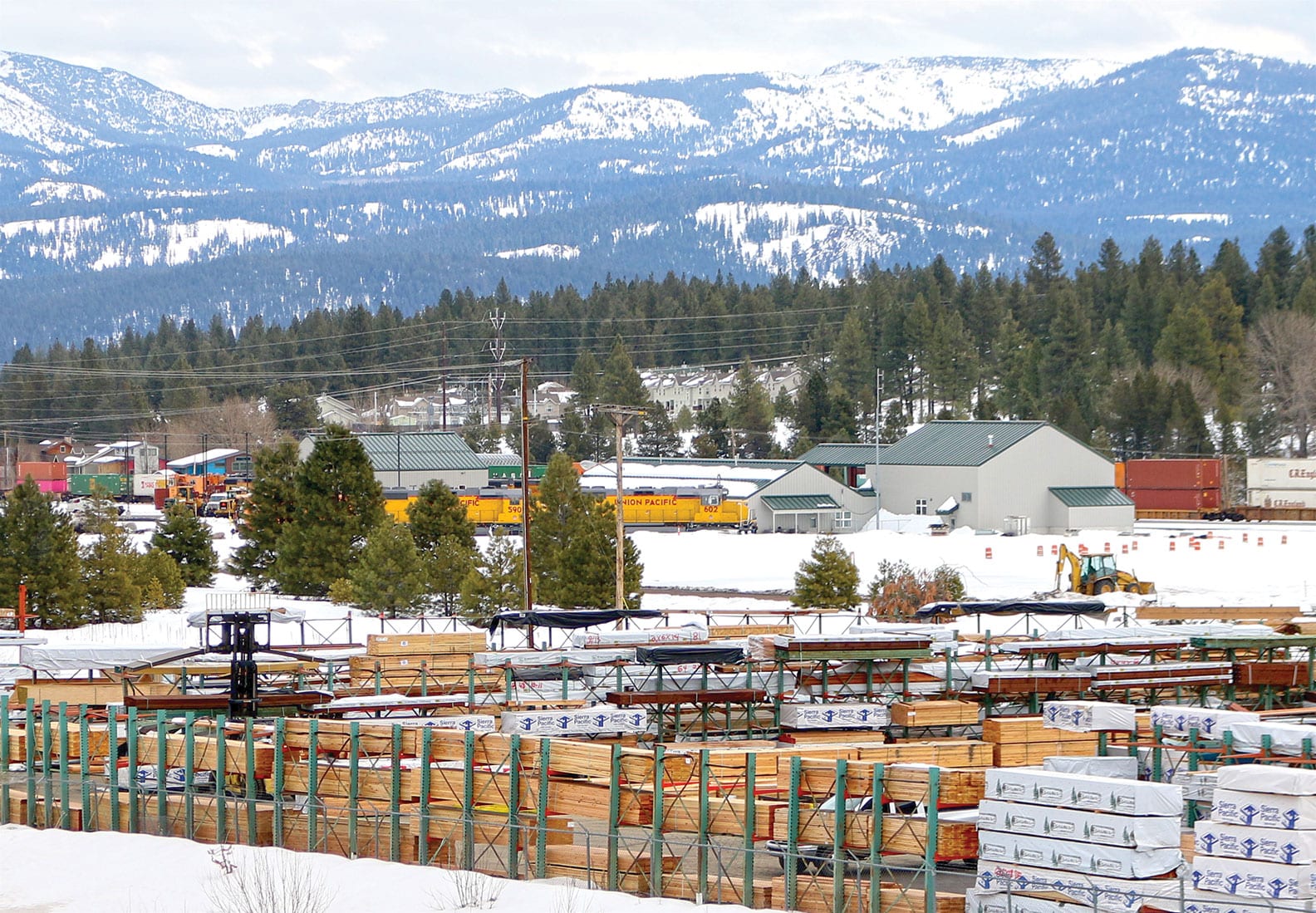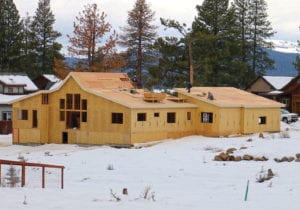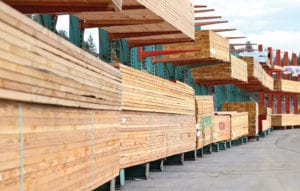
24 Feb Timber Tariffs Sting Tahoe Homebuilders
International trade policy lumbered into Tahoe’s homebuilding industry last year with pricy results.
Timber tariffs, targeting Canada, added tens of thousands of dollars to new home construction during the 2018 building season. Rising labor and fuel costs, and a hot housing market regionally, compounded the uptick’s financial impact.
Mark Tanner of Truckee-based Mark Tanner Construction says prices for a standard lumber package for a 4,000-square-foot home—the sort you may find in the Martis Camp development where Tanner’s team often has projects—increased from $125,000 to $145,000 during the 2018 building season. Siding packages rose from $55,000 to $70,000, he says.

A new home under construction in the Glenshire area, photo by Sylas Wright
“For a lot of our clients, it was sort of a ‘gulp,’ moment,” Tanner says. “They said, ‘OK, if that’s what it costs…’”
Tanner typically builds a 15 percent cushion into the budget for contingencies like the cost increase, so clients weren’t caught totally flat-footed, he says.
For background: In November 2017, the U.S. Department of Commerce finalized a roughly 20 percent tariff on softwood lumber imported from Canada. That’s the wood used in framing homes. Canada provides about 30 percent of the softwood timber used in American homes.
The levy came in response to a Department of Commerce review of the Canadian timber industry. The review found that Canada unfairly disadvantaged U.S. suppliers by providing subsidies to its timber companies, creating an artificial price 3 to 9 percent below market that Americans could not compete with, said U.S. Commerce Secretary Wilbur Ross in a bulletin about the review.
There “might be some small increase” in the price of lumber for a house, but it would “not necessarily” increase a home’s total price, Ross said when announcing the planned tariffs.
Results show they have.
“The current 20 percent tariffs on Canadian softwood lumber have contributed to huge price volatility which has been detrimental to the U.S. home building industry and American home buyers,” wrote National Association of Homebuilders (NAHB) Chair Karl Randy Noel in an October letter to President Trump asking him to reconsider the tariffs. The tariffs added $9,000, on average, to new homes in the United States, according to the NAHB.
Andrew Cross, of Truckee-Tahoe Lumber Company, a major supplier to local builders, says the increases, in the grand scheme of regional homebuilding, were “irrelevant.”

Lumber stacks at the Truckee-Tahoe Lumber Company, photos by Sylas Wright
“On some of these houses, the average framing package went up to $150,000 and the average siding package went up to $70,000, but that’s on a $5 million house,” he says.
Both Cross and Tanner note that a hot regional housing market—including Reno, where new starts in the last two building seasons have surged to their highest levels since 2005—have increased the demand for lumber and, consequently, the cost.
Sharing subcontractors and laborers with the Biggest Little City’s housing boom has also added to the cost, Tanner says.
Relief for homebuilders could be in sight for 2019, however.
Lumber prices fell from $638 per 1,000 board feet in May 2018 to $332.50 by early January this year, according to a Wall Street Journal report. New housing starts stagnated nationally—dropping 3.6 percent year-over-year in November 2018, and 4.6 percent from October 2018 to November 2018, according to the most recent figures available from the U.S. Census Bureau—signaling there may be less competition for lumber in 2019 and a leveling off of prices.




Stephen Grove
Posted at 04:18h, 20 MarchSo prices were negatively affected, but then by the end of your article they had dropped by almost half for 1,000 board feet? And the title still remains that timber prices sting Tahoe home builders? That’s misleading. That’s what I would call a bait and switch. Why write something if by the end of the article you’re going to say, “But whatever the protagonist of my story was, well, that’s pretty much all fixed now?”